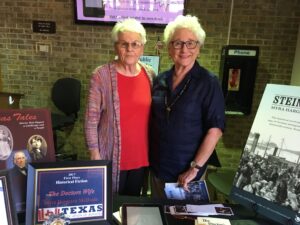Recently, I wrote about New Spain official’s sudden interest in Texas after they received word in 1685 that the Frenchman René Robert Cavelier, Sieur de La Salle landed a colony on Texas soil. For the next four years the Spanish Colonial government sent eleven–five by sea and six by land–expeditions in search of the intruders.
When they finally discovered La Salle’s Fort St. Louis south of present Victoria, all the inhabitants were dead and Indians had captured a few of the children. Fearing the French in Louisiana might move across the Sabine River into East Texas, the Spanish established Mission San Francisco de los Tejas near present Crockett in 1690 with a plan of Christianizing the Indians and laying a buffer against the French. The missionaries left under cover of darkness after only three years.
Over the next fifty years the Spanish made two more short-lived attempts to establish six East Texas missions.
Still worried about foreign aggression, the Spanish constructed Mission Señora del Espiritu Santo de Zuniga and la Bahía presidio on the site of La Salle’s abandoned Fort St. Louis, which they later moved to present Goliad—a strategic site intended to halt a possible invasion of the central coast at Copano Bay.
Each time European colonial governments showed interest in the New World, Spain moved into action. Spain’s war with England, coupled with the English occupying Georgia in 1733, spurred new worries about invasion along the coast from Tampico in Mexico to Matagorda Bay on the Central Texas coast. The answer seemed to lie in establishing villas and missions along the Rio Grande. The viceroy of New Spain appointed José de Escandón as military commander and governor of the new province of Nuevo Santander, which spread from modern Tamaulipas, Mexico into Southern Texas.
Charged with establishing settlements and missions between Tampico and the San Antonio River, Escandón sent seven divisions in search of the most favorable locales for future villas.
Escandón’s lieutenants nixed colonizing the area around present Brownsville and Matamoros because the land appeared too low—subject to flooding. Moving up the Rio Grande, Escandón found eighty-five families waiting at its confluence with the San Juan River. On March 5, 1749, the colonizer named Camargo (across the Rio Grande from present Rio Grande City) as his first villa. A nearby mission opened to convert the Indians who occupied jacales

circling the home of the missionary priests. Nine days later Villa de Reynosa became the second settlement.
Finally, in 1755 Escandón established his last villa where Tomás Sánchez de la Barrera y Gallardo, one of Escandón’s captains, convinced him an old Indian ford on the Rio Grande offered a good locale for a villa. Sánchez brought three families to make up the original settlement on his 66,000-acre land grant. Present Laredo grew from that original ranch to become the largest and most successful of Escandón’s permanent Spanish settlements in Southwest Texas.
In 1767 a Spanish royal commission began granting land to individual colonists within the villas along the Rio Grande. Due to the need for access to the river for transportation and irrigation in this near-desert region, the commissioners surveyed 170 porciones, rectangular strips of land about one mile wide fronting the Rio Grande and sixteen miles long, extending north away from the river for grazing cattle. Over the years, larger, cattle-grazing grants, which spread north of the porciones and along the Gulf Coast, went to influential residents of Camargo and Reynosa.
Escandón, who is know today as the “Father of the Lower Rio Grande Valley” and his lieutenants founded twenty-four towns and fifteen missions on both sides of the Rio Grande.

Always happy to learn new things about the Rio Grande Valley, where my heart lives.
I’m so happy to find another tale to tell. Thanks for following.
Great story as always, MM! Loved the addition of the jacales images as well!
Thanks, Bluebird. I always appreciate hearing from you.
It’s my pleasure! I’m sorry I’ve been remiss for the latter half of this summer. Gonna catch up! I’ve got some serious reading to do!
Myra, Texas does have a colorful and complex history. I understand it better now. Very interesting post.
Thanks, Earl. I love to share it with folks who are interested.